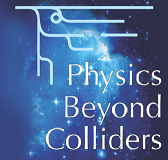Speaker
Description
Experiments at the Antiproton Decelerator of CERN compare the fundamental properties of matter/antimatter conjugates at lowest energies and with great precision. Such efforts provide stringent tests of the fundamental charge-parity-time invariance of the Standard Model, and allow testing of the equivalence principle of general relativity. Using single particles in Penning traps the most stringent tests of CPT invariance with baryons were carried-out by comparing proton-to-antiproton charge-to-mass ratios and magnetic moments with fractional precisions at the level of <100 ppt and a few ppm, respectively. Methods have been developed to improve the latter by a factor of >1000. Precise two-photon laser spectroscopic measurements on exotic antiprotonic atoms determined the electron-to-antiproton mass ratio with sub ppm precision. In efforts to compare the spectroscopic properties of hydrogen and antihydrogen with high resolution several milestones were achieved. Trapping of the elusive antimatter atoms has been demonstrated first in 2010, driven antihydrogen hyperfine-transitions were observed and a beam of antihydrogen atoms was produced. These developments culminated in a recent high precision study of the charge-neutrality of antihydrogen, and the experiments are rapidly progressing towards performing first high-resolution electromagnetic spectroscopy measurements with antihydrogen. On top of these spectroscopic efforts experiments to study gravitational interactions between matter and antimatter are currently being commissioned. As a major upgrade to the AD-facility the 100keV ELENA antiproton synchrotron has been approved and is about to be commissioned to soon provide lower-energy antiproton beams at improved emittance and thus 100-fold improved integrated rate of antiprotons which can be trapped. The talk will summarize the achievements made by the AD community and give an outlook on the bright future of antiproton physics at CERN.
Stefan Ulmer (RIKEN, Wako, Saitama, Japan) for the AD-Collaborations




